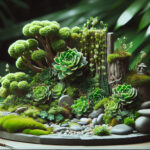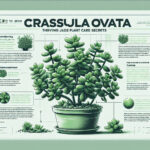Introduction to Crassula Succulents
Unveil the captivating world of Crassula, a popular succulent genre, and understand their distinct place in the botanical realm. Explore the origins and characteristics that make Crassula a unique succulent choice for plant lovers. Delving into the intricate world of these fleshy, water-storing wonders, we find that Crassulas are more than just eye-catching ornaments; they’re a testament to nature’s incredible adaptability and resilience.
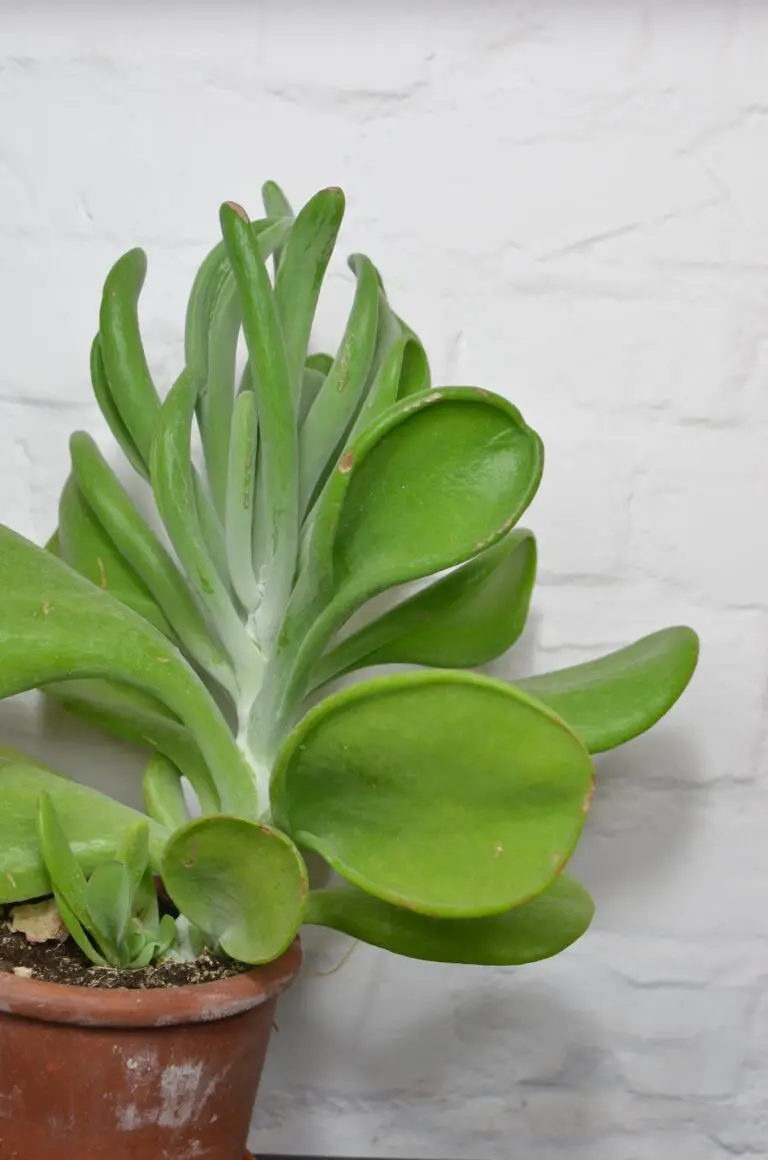
The genus Crassula includes a diverse array of species, each with its quirky form and foliage. These leafy marvels are not just for show; they’re hardy survivors, capable of enduring in arid environments where other plants may falter. From the towering Crassula ovata, commonly known as the Jade plant, to the delicate and intricate Crassula capitella, each species boasts its charm.
Crassula plants have ensnared the hearts of many with their sculptural beauty, inspiring both novice gardeners and seasoned horticulturists to invite these succulents into their homes and gardens. And it’s no wonder why: their low-maintenance nature makes them ideal for those desiring green companions without the fuss. Indeed, they’re a perfect blend of resplendent beauty and effortless care.
For those eager to embark on a journey with these succulents, discovering essential light tips for thriving plants can be an enlightening starting point. By understanding the specific needs of Crassulas, one can ensure these botanical gems flourish and bring joy for years to come.
Identifying Crassula Plants
Have you ever spotted a Crassula and wondered how to distinguish it from the vast crowd of succulents? It’s like trying to find Wally in a sea of striped-shirts—except for Crassula plants, it’s their fleshy leaves that make them stand out. Let’s explore the distinct features that earmark these resilient beauties and sprinkle in some tips on recognizing some common Crassula stars in the succulent world.
Picture this: you’re strolling through a garden, and there it is—a plump, jade-colored plant with glossy leaves thick with moisture. That chunkiness isn’t for show; it’s how Crassula plants store water, making them champions of drought survival. But it’s not just about being plump. Their leaves often grow in symmetrical patterns, presenting a geometric dance that’s pleasing to the eye.
Take the Crassula ovata, for example. This popular fellow, often called the ‘Jade Plant,’ can sometimes trick you into thinking you’re looking at a miniature tree with its robust, woody stems. But don’t let that fool you, those stems bear bunches of tightly packed leaves that are the tell-tale sign of a Crassula. Want to see this in action? Check out this insightful video for a clear illustration.
Now, if you’re curious about giving these succulents a shot in your garden, you’ll want to know how to care for your Jade plants. What’s brilliant is their diversity—there’s a Crassula for almost any setting. Whether you’re looking to drape your balcony with the cascading ‘String of Buttons’ (Crassula perforata) or add a touch of texture with the ripple-leaved Crassula arborescens, there’s a variety that will resonate with your personal style.
Eager to learn even more? Delve into our extensive collections for a deep dive into the captivating world of Crassulas. You’ll uncover their secrets and learn how these succulents can turn your living space into a verdant retreat with our in-depth guide.
The Cultivation and Care of Crassula
Engaging with the world of succulents can be an adventure, and courting Crassula plants is a charming chapter in that journey. To ensure your Crassula thrives, envision becoming its personal chef, setting the stage with the perfect mix of ingredients for growth. Let’s unravel the recipe for success, one step at a time.
Perfecting the Potting Mix
Like a gourmet dish requires the best blend of spices, Crassula demands an ideal potting mix. Imagine a fluffy, airy soil that’s to Crassula as a feather bed is to us—comforting and nurturing. A combination of potting soil with some perlite or sand is just the ticket for that delicate balance of drainage and support.
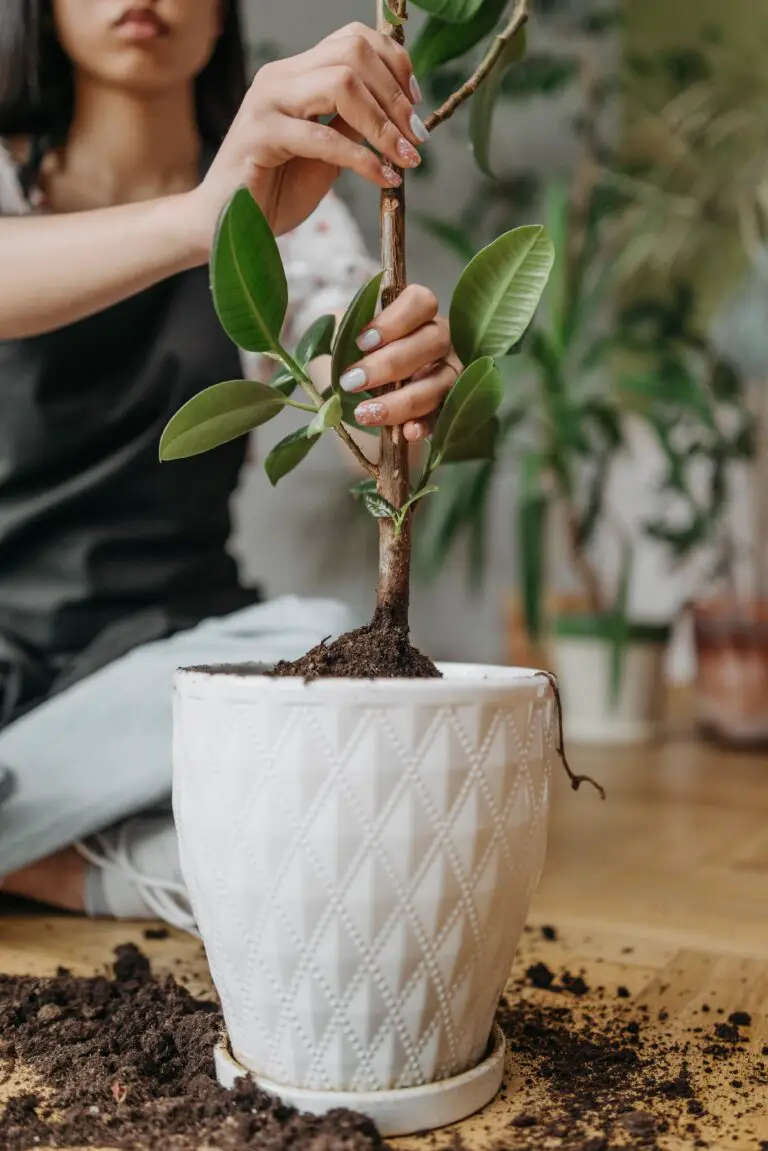
Bathing in Sunbeams
Consider the sun a benevolent king that bestows life upon your Crassula. Picture it basking in bright, indirect sunlight, soaking up those rays to fuel its photosynthetic feast. While it adores the sun’s embrace, direct, scorching sun can be akin to an overzealous hug—it means well but can be too intense. Aim for a bright room where it can sunbathe without the risk of a sunburn.
Warding Off Wily Weevils
Now, it’s not just about the pampers and the pampering; it’s about protection. There are critters out there looking to lay siege to your succulent. Mealybugs, for instance, sneak in like tiny trojans ready to feast. Be the valiant guardian of your green garrison—regular inspections and a spritz of insecticidal soap or neem oil when needed will keep the pests at bay. You can learn more about protecting your plants from common diseases and pests and ensure your Crassula’s stronghold remains impregnable.
A Symphony of Water and Drought
Watering a Crassula is like conducting a symphony; it’s about the rhythm and balance. Timing is crucial—wait for the topsoil to dry out before you offer your water libation. Then, drench it as a cloud would in a gentle downpour, ensuring every root gets a sip. Overwatering? That’s a villain in this story, a ticket to root rot. So, wait for dry soil to the touch, and then play the rain god once more.
When it comes to propagating your Crassula, patience and gentle care can result in a cascade of jade companions, all from the mother plant. Discover the joy of watching new life emerge in the form of tiny shoots and buds, promising more verdant beauty to grace your space.
Embrace each step in this green odyssey with enthusiasm and attentiveness, and the Crassula will reward you with robust health and lush foliage. Your journey in cultivating and caring for this succulent gem will be a tale of triumph in the realm of gardening.
Crassula Plant Varieties
When we talk about Crassulas, we’re not just referring to a single plant; it’s a whole tapestry woven with diverse species, each adding a unique thread to the Crassula family fabric. Imagine entering a greenhouse, where each corner and each shelf bursts with varieties of these succulent wonders—this is the world of Crassula plants.
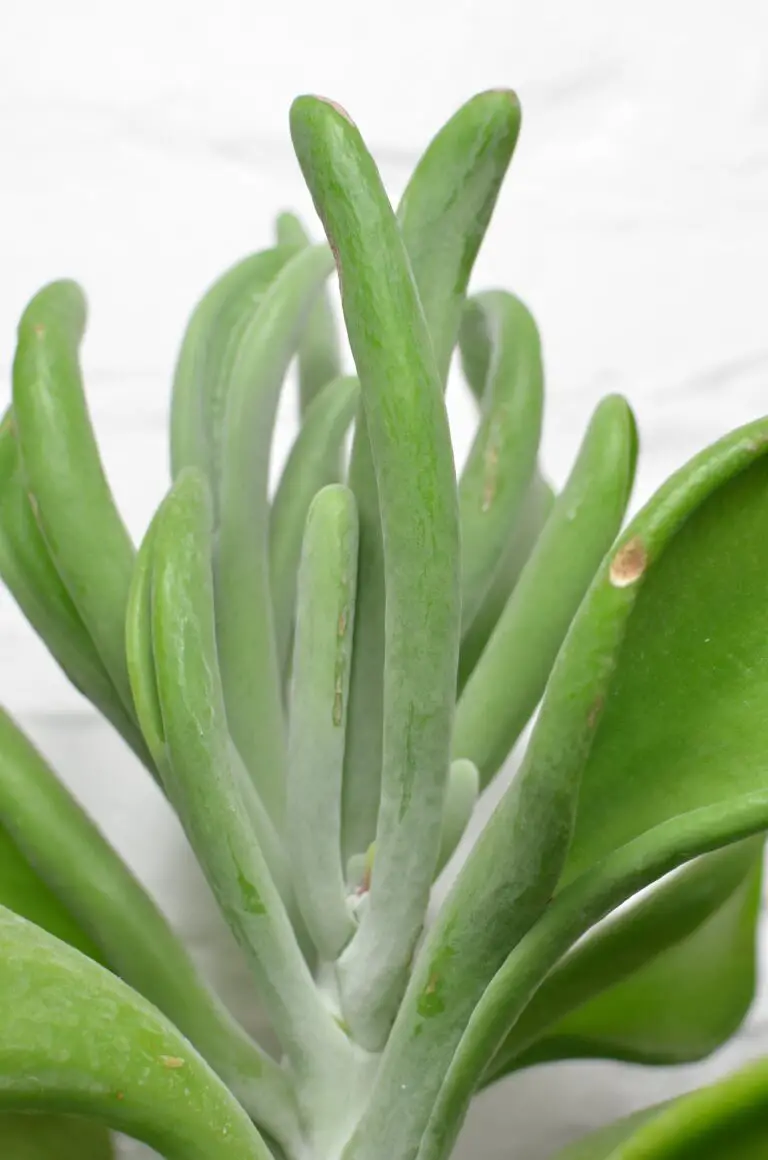
Take the Crassula ovata, commonly known as the Jade Plant, for example. It’s a classic, boasting thick, glossy leaves that store water to help it thrive in arid conditions. You recognize it instantly—plump leaves, a woody stem, and a propensity to sprawl or stack up high. It’s as if it’s telling us, “I’m built to last,” which is why it’s often passed down through generations, becoming a family heirloom.
On the more audacious side, we find the Crassula muscosa with its scaly, tightly woven foliage that conjures images of reptilian skin or a lush forest of miniature trees. Also known as ‘Watch Chain,’ this plant makes for a peculiar yet fascinating visual, demanding a closer look to truly appreciate its intricate beauty.
Not to be outshined, the Crassula capitella, or ‘Campfire Plant,’ sets the collection ablaze with its fiery red-tipped leaves. It’s a spectacle that intensifies with more sunlight, reminding us of nature’s dynamic artistry. And let’s not overlook the varieties that play with geometry, like the Crassula pellucida ‘Variegata,’ which offers angular precision in leaf arrangement with a dash of translucent color.
Each Crassula species tells a story, an evolutionary adaptation to less-than-kind environments, where they’ve learned to not just survive, but to thrive with a captivating charm. They are characters in a living novel, inviting us to turn the page and discover more of their secrets. So next time you admire these resilient plants, remember that each one is just a character in the expansive, evergreen Crassula narrative.
Benefits of Growing Crassula Indoors
For those of you pondering whether Crassula, the botanical celebrity commonly known as the Jade Plant, is more than just a pretty face, prepare to be amazed. This succulent wonder does, indeed, sprout with benefits that extend beyond its luscious green appeal.
A Touch of Elegance with Air-Purifying Qualities
First off, let’s talk aesthetics. Introducing Crassula into your living space isn’t just about adding a splash of green here and a decorative touch there. It’s about transforming your home into a natural sanctuary. Imagine each leaf as a brushstroke on a canvas, creating a living piece of art that calms the mind and captures the eye. But it’s not all about looks; Crassula plants are also appreciated for their air-purifying abilities. They quietly battle against volatile organic compounds (VOCs), serving as silent guardians that foster a cleaner breathing space.
Psychological Serenity and Wellness at Your Fingertips
Let’s pivot to wellness. Cradling your own personal patch of green can foster an unprecedented sense of serenity. Studies have shown that the mere presence of plants like Crassula can reduce stress levels, induce relaxation, and even enhance concentration and productivity — making them perfect companions for both living and workspaces. Plus, navigating the hustle and bustle of modern life becomes just a tad easier with these green allies by our side.
And speaking of health benefits, Crassula plants also step up the game by contributing to increased humidity levels. For those battling dry skin or irritation due to harsh indoor climates, a strategically placed Jade Plant can be a game-changer, doubling as a natural humidifier. It’s nature’s way of saying, “I got your back.”
It’s fascinating, really, how these resilient succulents, with their origins rooted in dry, arid lands, can bring about a refreshing wave in our modern-day concrete jungles.
Melding seamlessly into your daily routine, Crassula plants don’t just stand silently in a corner. They engage with every aspect of our well-being. So, as you sip your morning coffee or take that well-deserved break to bask in their emerald glow, remember — the benefits of these unassuming succulents are constantly at work, nurturing not just your surroundings but also your soul.
Propagating Your Crassula
Are you ready to watch your Crassula collection multiply? Great! Get ready to dive into the world of propagation with tips that turn beginners into green-thumbed experts practically overnight. It’s time to transform each leaf and stem into a potential new jade plant – a process that’s as satisfying as it is simple!
Leaf Cuttings: Nature’s Miracle at Your Fingertips
Start with the most accessible method: leaf cuttings. Gently twist a healthy leaf from your Crassula, making sure to get the entire base. The goal is a clean pull without any rips. Let the leaf sit for a day or two until the end callouses over – this is crucial to prevent rot. Then, place the leaf on top of a well-draining soil mix and watch the magic happen. Keep the soil slightly moist and in no time, you’ll see tiny roots stretching out and a miniature Crassula sprouting up!
Here’s a pro tip: patience is a virtue in propagation. Your leaf might take several weeks to show signs of life – that’s normal. The wait is part of the thrill. Imagine sprinkling your home with a variety of Crassula babies, all from a single parent plant. It’s recycling, nature-style!
Division: Crassula Cloning Made Easy
Ready for something with a bit more hands-on action? Division’s your game. Take a Crassula that has outgrown its pot and remove it carefully, shaking off excess soil to reveal the root system. You’ll see natural sections that can be separated, each with their roots intact. It’s like discovering hidden treasures beneath the soil. With a clean cut, separate these sections and plant them individually. Each section is a clone of the mother – and the success rate is remarkable.
Imagine hosting a plant swap with your neighbors, where everyone brings a piece of their garden to share. You arrive with Crassula divisions, and by the end, everyone’s eager to take a piece of your jade plant jungle home. It’s a community of plant lovers growing together, one division at a time.
Ready to see how it’s done? Witness the thrill of propagating Crassulas in action with this step-by-step video tutorial. Whether you’re a visual learner or just need a bit of encouragement, this video is your go-to guide for getting those green fingers working.
With these simple techniques, propagating your Crassula is as easy as pie. Each leaf cutting and division holds a promise of new growth, a testament to the sustainability and beauty of succulents. So, what are you waiting for? Go ahead, let your Crassula multiply and flourish!
Overcoming Challenges: Common Crassula Issues
Crassula plants, often hailed as the stoic icons of the succulent world, do face their fair share of tribulations. Let’s talk brass tacks – these green guardians are not unfazed by the typical turmoil of indoor gardening. Yes, they are resilient, but they are not invincible. Here, we unwrap the common challenges that throw Crassula owners for a loop and arm you with steadfast solutions to keep your jade plant jubilant.
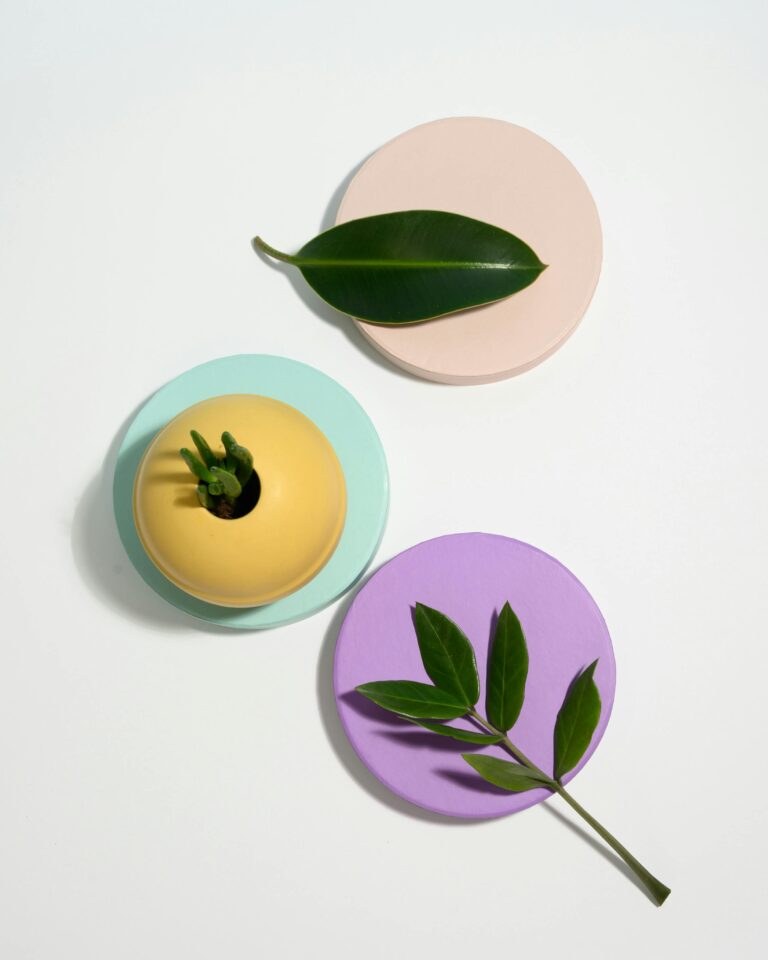
First on the list is the peril of overwatering. Imagine this – you’re feeling generous, maybe a little overzealous with the watering can, and voilà, your Crassula’s roots are swimming when they’d prefer to be just slightly damp. The result? A disheartened plant with mushy stems and leaves that drop faster than the beat at a rave. The antidote is simple – think ‘thrift store chic’ when it comes to water generosity. Allow the soil to dry between waterings, and your Crassula will reward you with unwavering firmness.
Next up, let’s shine some light on, well, light. Underlighting – it’s the unspoken gray cloud over many a Crassula. These sun-seekers can start to stretch out spindly limbs, reaching for a light source and turning your compact beauty into a lanky oddity. Counter it by mimicking a sun-soaked savanna. A bright windowsill or a supplemental grow light can turn those longing stares into a satisfied bask.
Last but certainly not least, we face the chill of temperature stress. Crassula, much like that friend who only wears shorts in winter, prefers it warm. Chill them to the bone, and they can sulk in silent protest. Keep them cozy – not hot, but Goldilocks-level just right – and you’ll find your Crassula much more amiable. Protect them from drafts and drastic temperature swings, and you’ve got a verdant comrade for the long haul.
In essence, the Crassula asks but three things: a moderated sip of water, a golden ray of light, and a snug spot away from wintry whispers. Bestow these, and you’ll be endowed with a succulent that stands tall amid the trials and tribulations of the plant kingdom.
Frequently Asked Questions
Peek into the world of Crassula succulents, and you’ll uncover a treasure trove of plant wisdom waiting to enhance your green thumb. Have you ever caught yourself marveling at the plump leaves of these fleshy beauties and wondering just how to help them flourish? Well, you’re not alone! Let’s dig into your most burning questions—with answers so handy, you might just become the go-to Crassula sage among your friends.
How Do I Care for My Crassula Succulent?
First off, let’s chat about care. Crassula plants are not overly needy, but they do demand respect for their preferences. Think of them as the Goldilocks of the plant world—not too much water, not too little light, just the right amount of TLC. The ideal Crassula home? A cozy spot with bright, indirect light. Watering is an art form here: Wait until the soil is dry before giving it a drink. But remember, ‘dry’ doesn’t mean a parched wasteland akin to a desert mirage. Your plant wants to quench its thirst without being swamped.
Why Is My Crassula Plant Dropping Leaves?
If your Crassula starts shedding leaves like it’s getting ready for a tropical vacation, don’t panic. This is its SOS signal that something’s off in its environment. Overwatering is the usual suspect, followed closely by poor drainage or a less-than-ideal potting mix. Take action like a detective on a case—investigate the watering schedule, ensure the pot permits proper drainage, and consider a gritty, well-draining potting mix. It’s about creating the perfect scene for a succulent film noir where hydration meets moderation.
Where Can I Buy Quality Crassula Succulents?
On the hunt for a Crassula to call your own? Look no further than your local nursery or garden center. There, among the foliage and flowers, you’ll discover these succulent gems waiting for the right plant parent to stroll by. If you’re craving convenience or seeking the rarest of specimens, the internet is your oyster—online stores are brimming with options. Just ensure you’re purchasing from a reputable plant boutique to avoid any botanical faux pas.
Can You Share Any Fun Facts About Crassulas?
Okay, fun fact enthusiasts, let’s sprinkle a little trivia into your plant knowledge. Did you know that Crassulas are genuinely globetrotting plants? Originating from diverse regions such as Southern Africa, they’ve charmed their way into homes across the globe. And here’s a juicy bit: the famed Crassula ovata, also known as the Jade Plant, is often labeled as a ‘money plant’ in several cultures, symbolizing prosperity and good luck. Imagine that—your green friend might be your personal financial advisor!
There’s a whole world of Crassula care tips and tricks out there, and who better to guide you through it than gardening experts themselves? Let’s take a visual tour with a helpful video on Crassula care—perfect for both budding enthusiasts and seasoned plant lovers.
So now you’re equipped with the know-how to tuck into your Crassula journey with confidence. Let’s keep those succulents smiling, shall we?
Conclusion
Captivating in their structure, crassula plants are not only succulents; they are symbols of resilience and grace in the plant kingdom. With leaves that architecturally stack themselves like emerald pagodas, they make caring for plants seem like an effortless and rewarding affair. It’s no wonder that these charming botanical buddies have found their way into the hearts and homes of plant enthusiasts worldwide.
If you’re pondering whether to let a crassula brighten your living space, consider this: their care is straightforward, their needs modest. Sunlight, sporadic watering, and a little whisper of encouragement are basically all that’s required to help these leafy friends thrive. It’s as if nature crafted them with the busy human in mind, offering a sliver of verdant vitality without the high-maintenance handbook.
Embrace the simplicity of tending to crassula succulents and be rewarded with a visual feast of hardy yet striking plants that ask so little yet give so much. They are the kind of companions that weather the storm with you, metaphorically speaking, their plump leaves retaining life’s vigor even when the skies look parched. Take a leaf out of their book—quite literally—and witness the zen-like ambiance they cultivate in any space.
Watch and Learn: Crassula Succulent Care
So, if you’re on the fence, let the lure of a lush, low-effort plant sway you. Adopt a crassula. Let its robust beauty unfurl on your windowsill. You’ll find it’s not just a plant, but a quiet, steadfast friend, thriving silently alongside you, a testament to the joy of growing succulents. In fact, its very presence may just coax a green thumb out of the most unsure gardeners among us.
